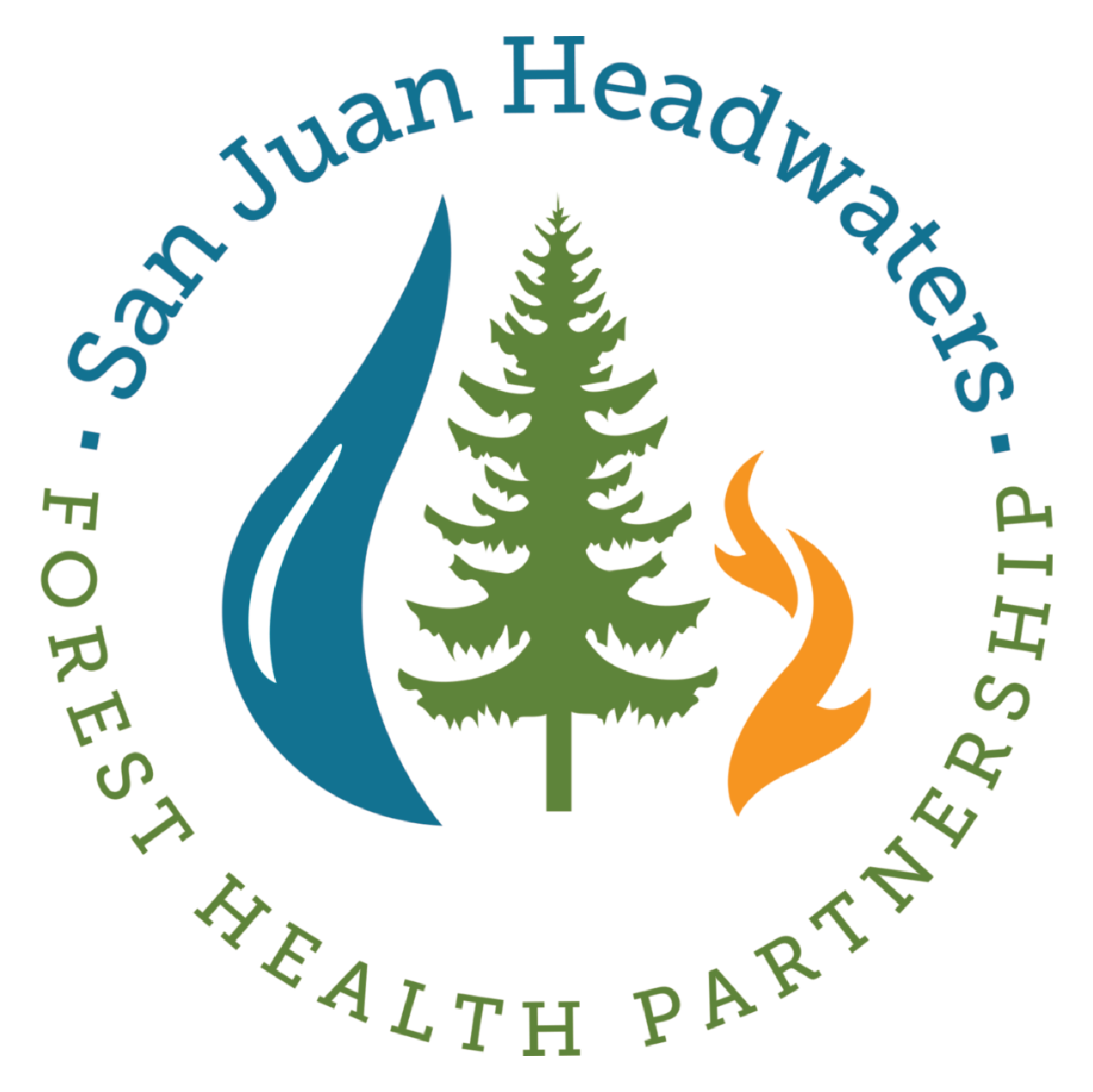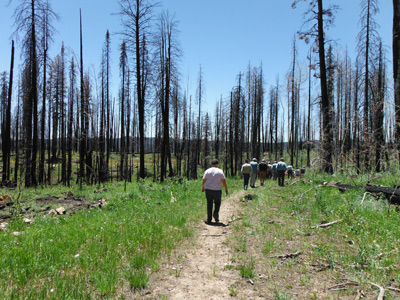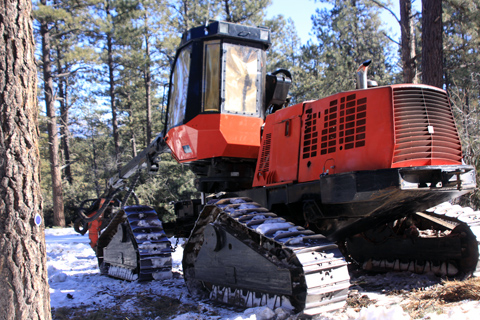Effect of wildfire on watersheds — meeting in Pagosa Springs
By Melissa Stedman, Pagosa Sun staff
The San Juan Headwaters Forest Health Partnership (SJHFHP) is beginning an assessment and prioritization of risks from wildfire on watersheds, such as on water supplies and facilities, in order to asses their vulnerability to wildfire and highlight areas in need of mitigation or treatment to reduce the impact of fire.
According to the partnership, “SJHFHP is a collaborative, community-based partnership with a goal of protecting the forest and water resources based upon stakeholder-driven priorities and sound science. The geographic area of focus is the Upper San Juan Watershed or roughly the lands encompassed within the exterior boundaries of the U.S. Forest Service’s Pagosa Ranger District. Participation in the group is open to any interested individuals and organizations.”
The first step in the process of assessment and prioritization includes an initial meeting on July 19 in order to pull together the key pieces for an assessment document. During the meeting, community members and partners of the SJHFHP will discuss where the community is now with wildfire assessment, what potential threats and issues the watersheds are facing now, as well as what priorities are in place to protect current water supplies. SJHFHP will provide future opportunities for larger community involvement and discussion.
Workgroups included in the process of assessment include those dealing with opportunities for reporting and outreach, data inventory/Geographic Information Systems (GIS), determining fire risk, documenting the water quality factors, developing of a method of prioritization, prioritizing areas of concern and potential threats, as well as writing a document of assessment.
The document of assessment will be used as a resource to inform future and existing watershed efforts, community wildfire protections plans (CWPP) and community health processes.
“Essentially, we are looking to complete this process and have a document available for the community and public in February 2014,” Aaron Kimple, Mountain Studies Institute program coordinator, said. “Right now, we are backtracking that deadline date to see how to get there while looking at landmarks for achieving that goal.
“What we are hoping to build is a document that will be available to the community and will help to augment existing documents. We want it to be accessible for the use in already existing efforts. It will also include a lot of maps. People will get an understanding of what the ‘on-the-ground conditions’ are that will contribute to the threats that we are assessing. What would soils be? What would the vegetation be like? What would it take to revegetate the area and reestablish and reduce the erosion issues and the kinds of things that would go into the water resources for the community? When the group first started, they looked at what is a healthy forest and that also translates into water resources as well as overall forest health and water quality. What can we do on the ground, in the forest, that would help reduce those detrimental impacts to those water sources?”
According to SJHFHP, the process of assessment and prioritization will include, “a review of the watersheds, infrastructure, and water resources associated with the region, an evaluation of watershed characteristics, an identification of possible threats, and prioritization of potential actions to reduce those threats.”
This project is facilitated by the Mountain Studies Institute (MSI) and has been funded by grants from Southwestern Water Conservation District and the Colorado State Forest Service, and an Archuleta Title Three grant.
According to SJHFHP, “Colorado, along with other western states, is expected to experience increased risk of large, high intensity wildfires such as we are currently seeing with the West Fork and Papoose fires. Studies of similar fires that occurred at the beginning of this cycle such as Hayman and Missionary Ridge in 2002 have shown that the post-fire costs of flooding, flood mitigation, siltation of reservoirs and damage to water supply systems often greatly exceed the direct costs of fighting the fires.
“Studies have also shown that vegetation treatment to reduce the likelihood of severity of wildfire can be more cost effective than repairing water storage and transport facilities after wildfires. Post-fire flooding also often damages private property and destroys homes that survived the actual fire.”
“This project is intended to be a practical assessment, using existing data and local knowledge, of the threats to the watershed, water supplies, and water facilities from wildfire. Ways to reduce those threats will be identified and suggestions for priorities developed. This information will supplement existing county-level Community Wildfire Protection Plans (CWPPs) and will aid in the development of more specific subdivision level CWPPs. Land managers and water utilities can use the information to identify, prioritize and fund pro-active projects that should save money in the long run.”
Members of the public are encouraged to attend. The SJHFHP want to make sure that the assessment and prioritization is complete and accurate. Any contributions are encouraged. For more information, contact Aaron Kimple, SJHFHP program coordinator, at (970) 382-6908 or akimple@mountainstudies.org.
“This is the beginning of the process and we are going to make sure it is an open transparent process and we will be asking for community input throughout the whole effort.” Said Kimple.
The initial meeting for beginning the process of the assessment and prioritization is from 10:30 a.m.-12:30 p.m. at the Pagosa Chamber of Commerce Visitor Center. Items included in the agenda are establishing a timeline, defining priorities and establishing a project list.


